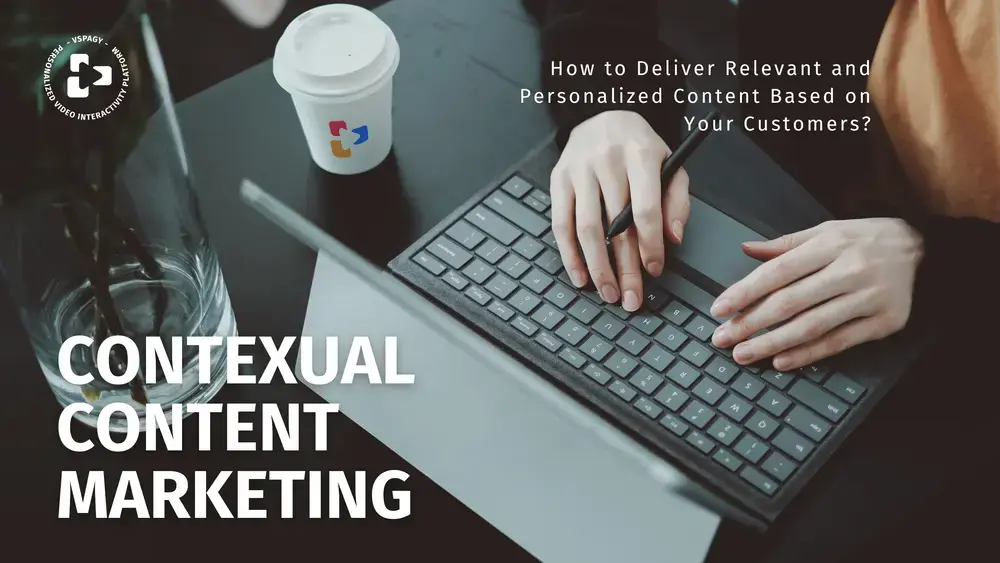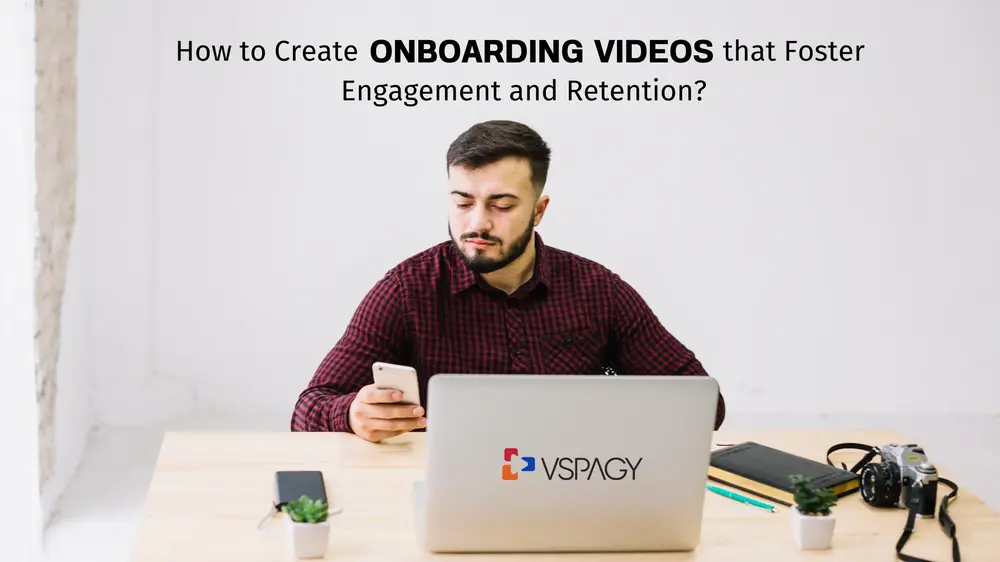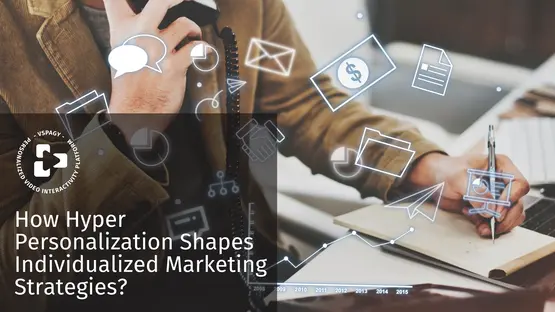Contextual Content Marketing: How to Deliver Relevant and Personalized Content Based on Customer Needs
May 21, 2025

Introduction
In the age of the internet, customers now anticipate that brands know what they need and give them material that is personal, timely and relevant. Here is where Contextual Content Marketing enters the marketing scene. Instead of using a size-fit-all approach, businesses can tailor your content based on customer behavior, preferences and real-time interaction.
But how can you apply relevant material marketing effectively? Let's look at it in detail.
What is Contextual Content Marketing?
Relevant material advertising or Contextual Content Marketing is a strategy that specializes in giving the right delivery of message to the right audience at the right time. This includes understanding user behavior, demographics, region, search intentions, and different relevant factors to create tremendously relevant and appealing materials.
For example:
If a user discovers the "best trekking locations in India", a travel brand may show them a blog post about trekking destinations.
If a customer often buys fitness products, an e-commerce site may recommend a workout plan or nutrition guide.
Why Is Contextual Content Marketing Important?
Enhancing user experience: Personalized/Individual content boosts customer engagement and maintains users on your platform longer.
Increase in conversion rates: Customers are more likely to take action when they receive the material that aligns with their interests.
Brand creates loyalty: When brands understand the specific needs of customers and fulfil them, they gain trust of their users and increases repeat engagement.
Increases marketing effectiveness: Instead of pushing generic messages, brands focus on what actually resonates with the customers.
Major Strategies for Giving Relevant & Personalized Content
-
Understanding Your Audience with Data Analysis
The first step in any relevant material marketing is collecting insights about your audience. With the help of tools like Google Analytics, CRM, and social media analytics to monitor user demographics, browsing patterns, physical interaction and search purpose. This information assists you in segmenting your audience and presenting highly relevant content.
-
Capitalizing on AI and Machine Learning
AI-based hardware can automate suggestions, personalize emails, and forecast customers' content preferences. Machine learning helps businesses to estimate that the material will echo the most with individual users, making material marketing more effective and efficient.
-
Creating Personalized Videos for Better Engagement
Video content has a high engagement rate, and privatization makes it even more effective. Brands can create personalized videos for customers based on their previous interactions, interests, or purchase history. This increases user experience and increases conversion rates.
-
Adapt The Materials for Various Customers' Touchpoint
Customers interact with brands on many platforms such as websites, social media, email and mobile apps. Each touchpoint requires a separate material strategy. For example, blog readers prefer detailed guides, while social media users are more attached to short videos, reel or infographics.
-
Use Behavioral Trigger to Give Real-Time Content
Real time marketing is important for personalization. Behavioral triggers like abandoned cart emails, geolocation push messages, and retiring ads assist in providing real-time and contextual content. This enhances engagement and calls-to-action.
-
Use Interactive and User-Related Materials
Interactive materials such as Quiz, Pol, and Chatbot engage users. Encouraging customers to share, reviews, or share experiences also creates confidence and enhances privatization.
-
Personalize Material for Various Customer Segments
Not all customers have equal requirements. Dividing its audience into groups such as new visitors, repeat customers and VIP buyers helps sew material. New customers are able to access learning material, while repeat customers can access special offers or first-time product usage.
Using these techniques, business applicable content will be able to optimize marketing effectiveness and produce meaningful connections with your audience.
Examples of Relevant Material Marketing in Action
To see how material marketing applies, let's consider some actual examples:
Netflix - Personal recommendations: Netflix analyzes the history of users to recommend films and shows. Their system provides each user with a curated experience to cater to their taste.
Amazon - Product Recommendation: Amazon recommends products based on procurement and browsing history. Their recommendation system drives a significant portion of their sales.
Spotify - personalized playlist: Spotify's "Discover Weekly" and "Release Radar" are primarily created based on listening behavior, giving users a different experience every time.
These brands apply pertinent material marketing in order to generate hyper-percentile experiences that engage users.
Relevant Content Challenges and Solutions in Marketing
Although effective material marketing is very useful, there are some challenges involved. Here are ways you can avoid them:
-
Data Privacy Situation
Customers are hastily notified how their facts are collected and utilized. To deal with this, manufacturers ought to be transparent about their statistics regulations, permit users to manage their privacy settings, and ensure compliance with policies which include GDPR.
-
Material Overload
With so much material being available, users often feel overwhelmed. To prevent this, pay attention to more quality than quantity. Customers use AI-operated recommendations to get only the most relevant materials. Additionally, the material distribution at the right time increases the scheduling engagement.
-
Keeping With Changing Trends
Consumer preferences and market trends develop rapidly. Businesses need to continuously monitor the behavior of the audience, track industry changes and adapt their content strategies accordingly. Using new content formats such as interactive materials, AR/VR, or live videos can help maintain connectivity.
-
Balancing Individualization and Automation
While AI and automation materials streamline marketing, excessive automation may feel robotic. To attack the right balance, include human elements such as personal messages, storytelling and interactive experiences.
-
Managing Omnichannel Presence
Customers engage with brands in various platforms including social media, email, website and mobile app. These channels require a well -integrated omnichannel strategy to provide frequent and personal experiences. Using CRM and AI-operated equipment can help maintain easy communication.
Final Thoughts and Key Concepts of Contextual Content Marketing
- Understanding Your Audience Is the First Step: Collecting and analyzing data helps to identify customer preferences, behaviors and requirements, allowing businesses to create content echoing.
- AI And Automation Can Increase Personalization: Using AI-operated tools helps distribute real-time recommendations, dynamic materials and automatic interactions that improve user engagement.
- Creating Individual Videos Is a Game-Shiner: It can significantly promote attractive visual retention, confidence and conversion rates to suit individual users.
- The Content Must Be Adapted to Many Platforms: Whether it is social media, email, or search engine, adapting the material to fit each channel ensures a comfortable customer experience.
- Behavior Triggers Improve Real-Time Engagement: Sending targeted content based on user works, such as retiring abandoned cart emails or advertisements, enhances the possibility of conversions.
- Customer Division Drives Better Results: Classifying users based on its travel phase allows brands to create highly relevant materials that meet specific requirements.
It is necessary to stay current with trends-consumer behavior evolves over time, therefore examining typical trends and applying new formats like AI-related content, live streaming and interactive features keeps brands ahead.
Through these practices, companies are able to build solid relationships, enhance customers' satisfaction, and related material can perform more effectively with marketing.
Frequently Asked Questions
Why is delivering personalized content important for my business?
Personalized material helps businesses to join with its audience by providing relevant information based on user preferences. It improves engagement, enhances conversions, enhances customers' satisfaction, and creates long -term brand loyalty by making interaction more meaningful.
What are the common mistakes to avoid in contextual content marketing?
Choose real and meaningful content over generic talk. Keep data simple and clear to attract attention. Use AI mindfully-human emotions still create stronger bonds. Stay updated with changing trends, respect user privacy, and aim to make your audience feel truly understood and comfortable.
What impact does contextual content marketing have on customer engagement and loyalty?
This increases the engagement by providing relevant materials on time that matches the needs of customers. When users gain personal experiences, they feel valuable, which strengthens confidence, encourages repeat trips, and promotes long -term brand loyalty.
How can I measure the effectiveness of my personalized content campaigns?
Track major performance indicators such as clicks, engagement levels, conversion rates, boom rates, and customer retention. Tools such as Google Analytics, email tracking, and AI-operated insights help measure success and adapt future campaigns.
Conclusion
Relevant material marketing is all about creating personalized content that truly connects you with your customers. By combining AI tools with customer data and using interactive, customized content, you can effectively tap into consumer emotions and align your services with their needs-reshaping your strategy at the right time. Whether you're using or interactive real-time modes, your goal is to create a seamless, useful, and frictionless experience. Consumers expect brands to understand them and offer them personalized care in the customer-driven economy today. With personalized videos and tailored messages, you can meet the individual customer needs, stand out from the crowd, and create long-term loyalty. Start incorporating these strategies today to help your content become more effective and purpose-driven.
Recommended Articles:
Personalized Video Marketing Enhances Customer Experience in the Consumer Durable Industry.
Contextual Marketing: The Essential Strategy for Today's Business Need
Benefits of Video Marketing for Customer Growth in 2025
Hyper-Personalization vs. Personalization




